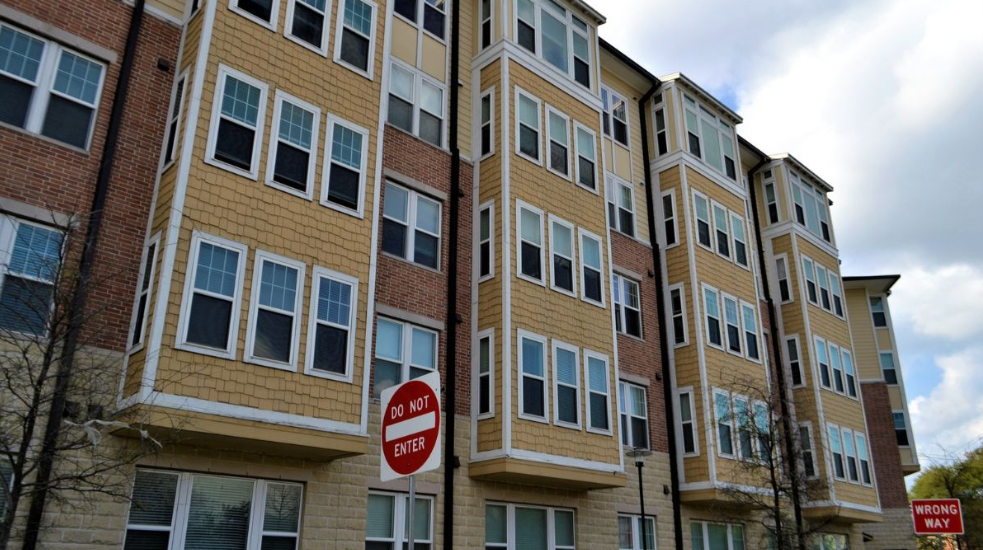How to Calculate Depreciation on Rental Property
As a real estate investor or rental property owner, understanding how to calculate depreciation on rental property is crucial for maximizing your tax benefits. Depreciation is an accounting method that allows you to deduct the cost of purchasing and improving a rental property over its useful life.
In this comprehensive guide, we will cover everything you need to know about rental property depreciation calculation, including the formula for rental property depreciation. By the end of this article, you will have a clear understanding of the straight-line depreciation method and other depreciation methods available for rental property. Let’s dive in and explore.
What is Rental Property Depreciation?
Depreciation on rental property is the gradual decrease in the value of your property and its components over time. This reduction in value can be due to wear and tear, obsolescence, or deterioration of the property. The Internal Revenue Service (IRS) considers depreciation as a tax deduction that you can claim on your rental property, reducing your taxable income.
Calculating depreciation on rental property can be complex. Fortunately, you can use a rental property depreciation calculator to help you estimate the depreciation amount. However, it’s always a good idea to consult with a tax professional to ensure you are accurately calculating depreciation and staying compliant with IRS regulations.
Depreciation of rental property is an essential aspect of rental property management, as it can help you maximize your tax benefits and ensure the financial success of your investment.
How Rental Property Depreciation Works?
Rental property depreciation is a fundamental accounting principle that allows you to deduct the cost of a rental property over a specific period. This concept is crucial for landlords as it refers to the gradual wear and tear of a rental property over time.
The process begins as soon as the property is placed in service, i.e., ready and available for use. The IRS assumes a typical life of 27.5 years for residential rental properties and 39 years for commercial properties. Each year, you can deduct a certain percentage of the property’s cost basis from your annual income. For instance, if you’re a real estate investor, each year you can deduct approximately 3.636% (100% divided by 27.5 years) of the property’s cost basis from your annual income.
Calculating property depreciation is a three-step process that involves determining your cost basis, which includes the costs of buying and improving a property, then dividing it by the property’s useful life.
How to Calculating Depreciation on Rental Property – Easy Methods
When it comes to calculating rental property depreciation, there are two commonly used methods: the straight-line method and the accelerated depreciation method. Both methods have their advantages and disadvantages, and the chosen method can significantly impact your tax benefits. Let’s take a closer look.
Straight-Line Method of Depreciation
The straight-line method is the most commonly used method for calculating rental property depreciation. This method assumes that the property’s value decreases consistently each year over its useful life. To calculate depreciation using this method, you need to follow these steps:
- Determine the cost basis of rental property. This includes the purchase price, closing costs, and any other expenses directly related to acquiring the property.
- Subtract the property’s estimated salvage value from the cost basis.
- Divide the remaining amount by the property’s useful life, which is 27.5 years for residential rental properties.
- The resulting amount is an annual depreciation deduction.
For example, suppose you purchase a residential rental property for $300,000 with a salvage value of $30,000. In that case, your depreciable basis is $270,000 ($300,000 – $30,000), and your annual depreciation deduction is $9,818 ($270,000 ÷ 27.5).
Accelerated Depreciation Methods
Accelerated depreciation methods allow you to deduct a larger portion of the property’s cost basis in the early years of ownership, which can be beneficial for taxpayers looking to reduce their tax liability. There are several accelerated depreciation methods, such as the Modified Accelerated Cost Recovery System (MACRS). To calculate depreciation using an accelerated method, you need to follow these steps:
- Determine the cost basis of rental property.
- Select the appropriate recovery period. For residential rental properties, the recovery period is 27.5 years.
- Select the depreciation method. MACRS offers several methods, including the 200% declining balance method and the straight-line method.
- Refer to the IRS-provided MACRS depreciation table to determine your annual depreciation deduction.
While accelerated depreciation methods can result in higher deductions in the short term, they may result in lower deductions over the property’s useful life. Thus, it’s essential to carefully consider which method will provide the most significant long-term tax benefits.
Factors Influencing Depreciation Calculation
Several factors can impact the depreciation calculation for your rental property, affecting the amount you can claim on your tax returns. Understanding these factors is crucial for accurately calculating your rental property depreciation.
Improvements and Repairs
Any improvements or repairs made to your rental property can affect the depreciation calculation. Improvements that add value to the property, such as a new roof or HVAC system, can be depreciated over a longer period than repairs that just restore the property to its original state.
Changes in Use
If there is a change in the use of the property, such as converting a rental property to personal use, it can impact the depreciation calculation. In this case, the depreciation must be recaptured and added back as income in the year of the change.
Land Value
It’s essential to differentiate between the value of the land and the value of the building when calculating depreciation. Land does not depreciate, so it’s important to determine the value of the land separately and subtract it from the overall property value before calculating the depreciation.
Depletion
Depletion is a type of depreciation that applies to natural resources such as oil, gas, and minerals. If your rental property includes natural resources, you may be eligible for depletion deductions, which can impact the overall depreciation calculation.
Consulting a Professional
Given the complex nature of rental property depreciation, it may be beneficial to consult a tax professional to ensure accuracy in your calculations. They can guide you on how to account for various factors that can impact the depreciation amount and provide advice on optimizing your tax benefits.
Maximizing Tax Deductions with Depreciation
As a rental property owner, one of your top priorities is to optimize your tax deductions and reduce your taxable income. Depreciation is a powerful tool that can help you achieve this goal. By deducting a portion of your property’s depreciation as an expense on your tax return, you can lower your taxable income and increase your cash flow.
To maximize your tax deductions, it’s crucial to keep accurate records of your rental property expenses, including your depreciation calculations. Make sure to track all relevant expenses, such as maintenance, repairs, and improvements, and categorize them correctly on your tax return. Keep copies of all receipts and invoices, and store them in a safe and organized manner.
Another way to optimize your deductions is to take advantage of bonus depreciation. Under the Tax Cuts and Jobs Act, rental property owners can deduct up to 100% of the cost of qualified property in the year it is placed in service. This can provide a significant tax benefit and boost your cash flow. However, there are specific rules and limitations to be aware of, so it’s advisable to consult with a tax professional before taking this step.
Seeking Professional Guidance for Depreciation Calculation
While calculating depreciation on your own is possible, it can be a complex and time-consuming process. Hiring a tax professional or using a rental property depreciation calculator can ensure accuracy and maximize your tax benefits.
However, it’s important to ensure that the calculator you use is reliable and accurate. Consulting a tax professional can also provide valuable insights into your specific situation and ensure that you are utilizing all available tax benefits. A tax professional can analyze your rental property’s depreciation, as well as other factors such as expenses and income, to provide comprehensive tax planning advice.
Overall, while seeking professional guidance may involve some additional costs, it can ultimately save you time and money in the long run by maximizing your tax benefits and reducing the risk of errors on your tax returns.
Conclusion
In conclusion, understanding how to calculate depreciation on a rental property is an essential aspect of property investment. It provides a significant tax advantage by allowing property owners to deduct a portion of their property’s cost each year over a period of 27.5 years for residential properties. This process involves determining the cost basis of the property, excluding the land value, and dividing it by the property’s useful life as defined by the IRS.
However, the rules around depreciation can be complex, and the consequences of errors can be serious. Therefore, it is highly recommended that property investors consult with a tax professional or real estate accountant to ensure accurate calculations and maximum tax benefits.






